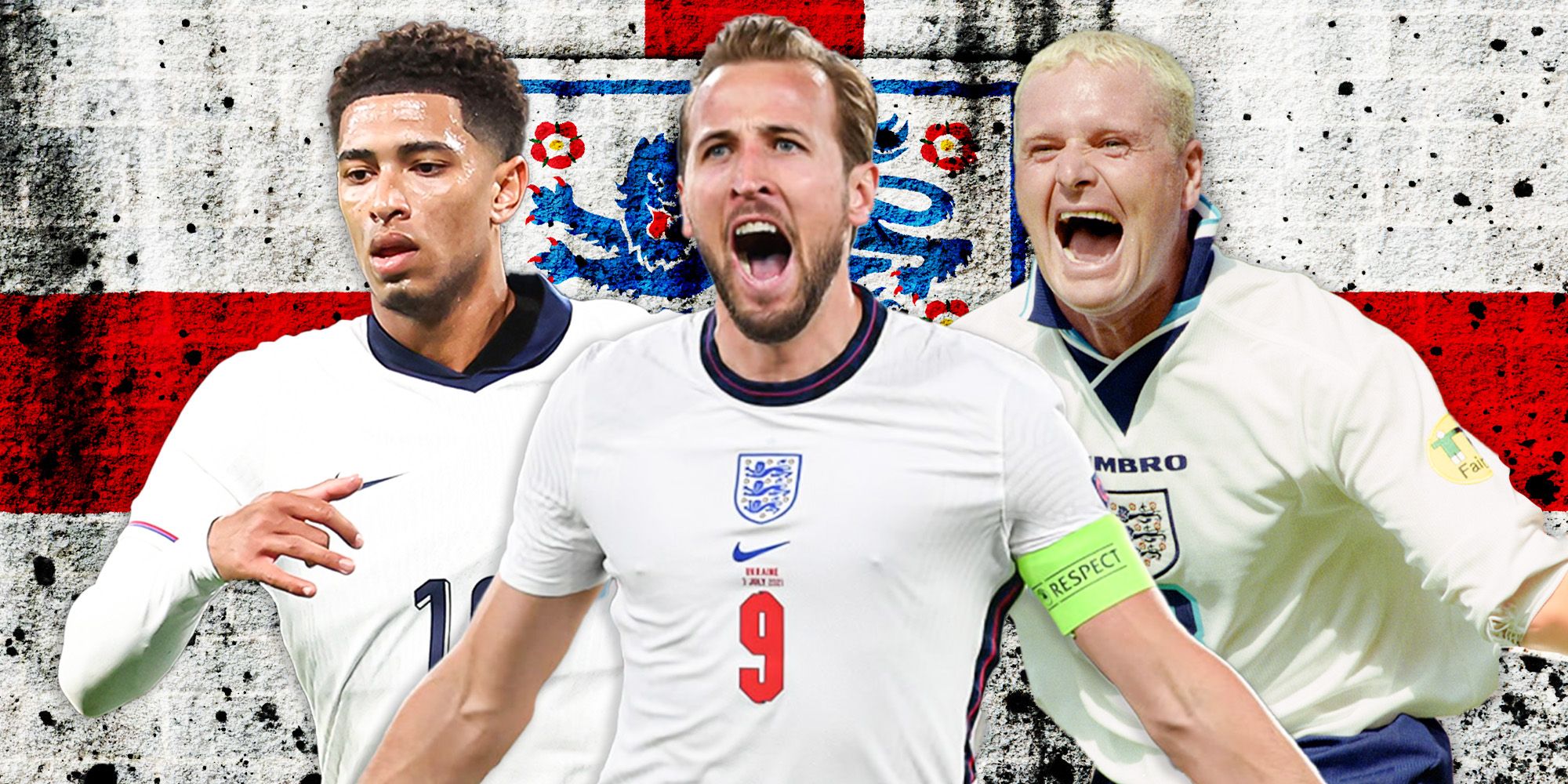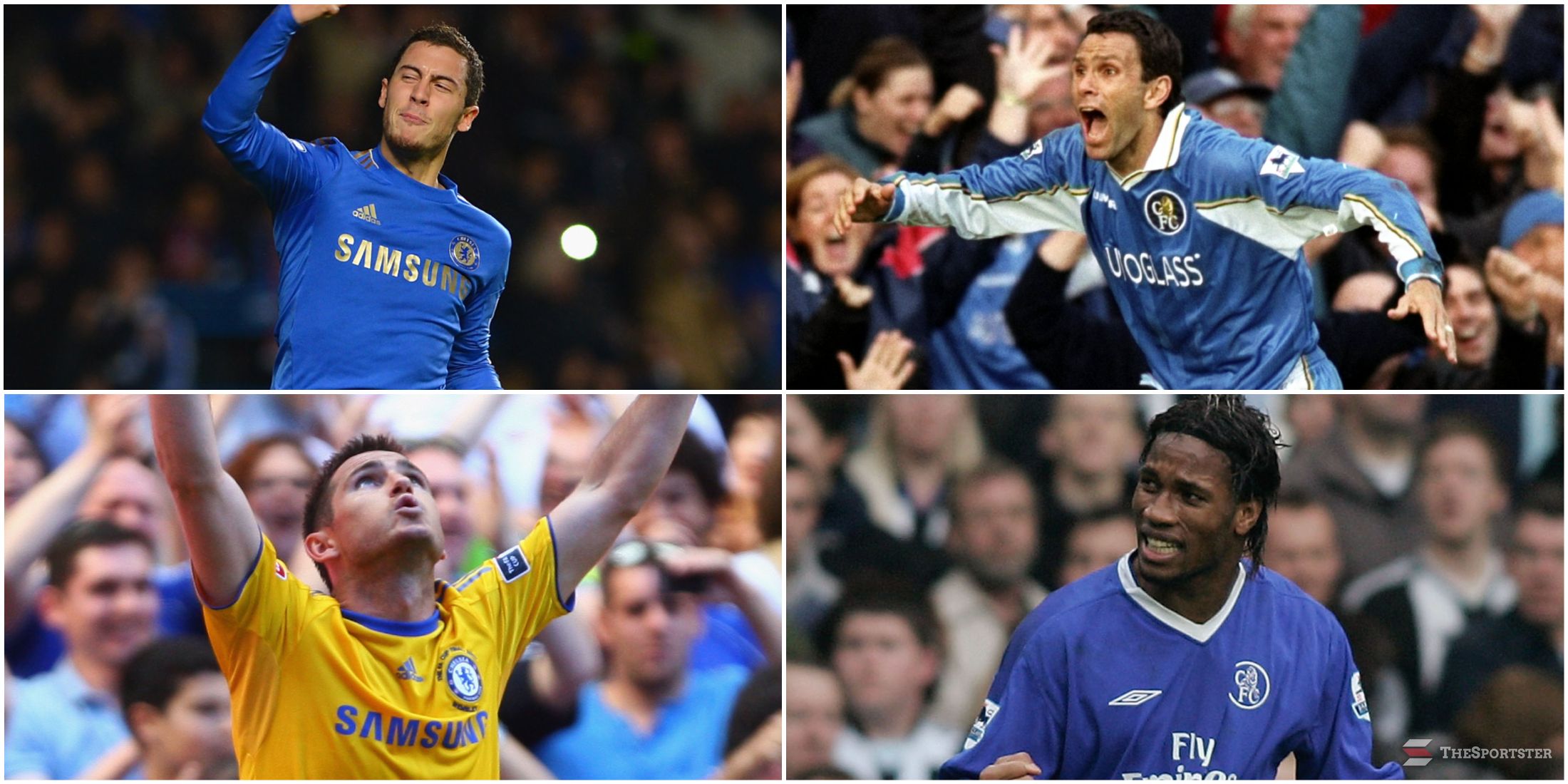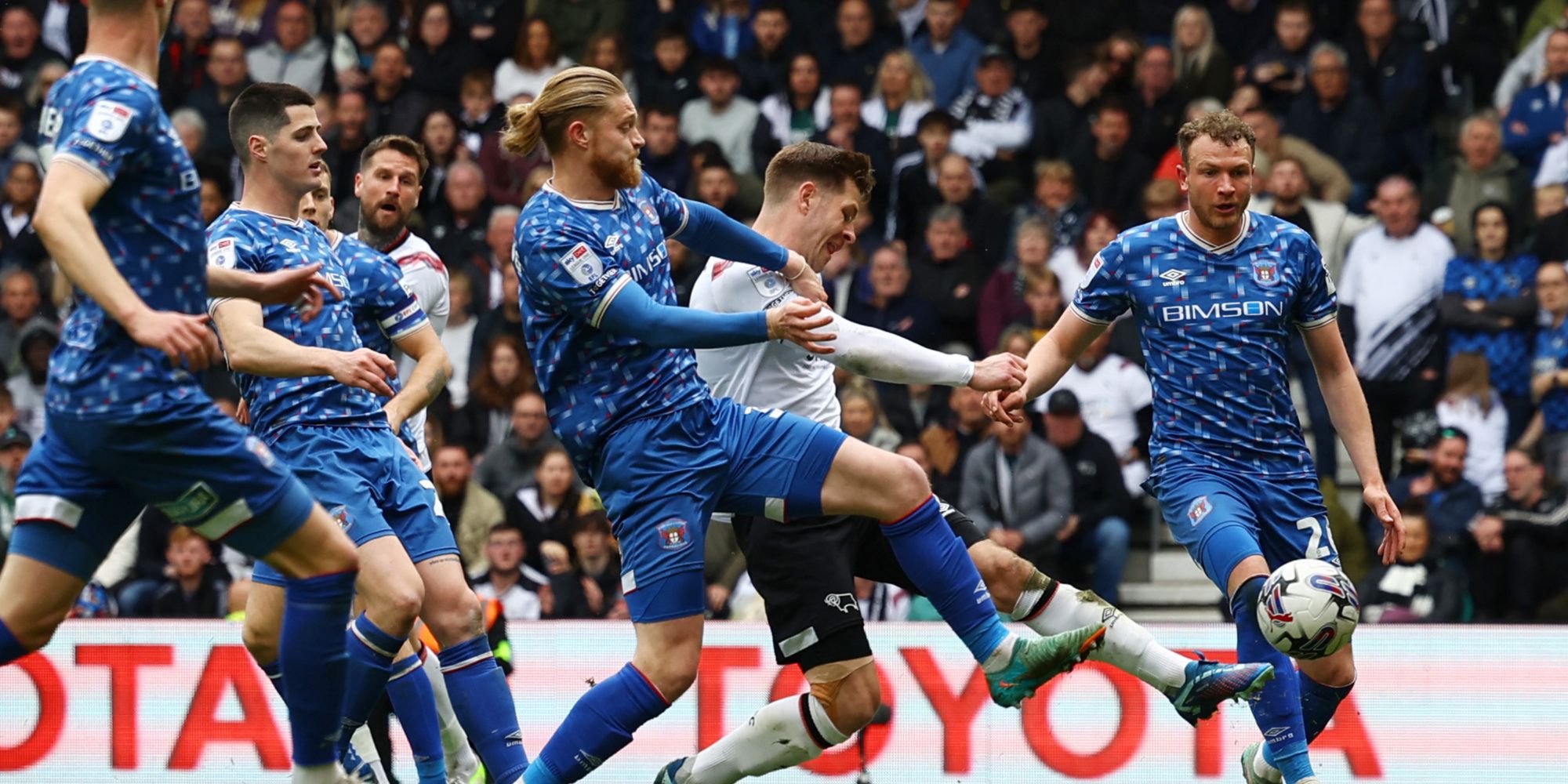Highlights
- Umbro are celebrating 100 years of business.
- Iconic Umbro kits have been worn by teams like Scotland, Manchester City and Chelsea over the years.
- There have been historic moments for clubs like Stoke City, Brazil and England wearing Umbro kits.
Umbro are one of the most well-known kit manufacturers in football, and they have been producing kits for an entire century. The iconic double diamond has been featured on kits worldwide and in the past 100 years they have made some timeless classics. Iconic is the word you can almost certainly associate with the brand.
They are arguably associated with the England national team the most as they produced kits for the country across two periods covering 1966-1972 and 1984-2012. England fans have a mostly positive memory of the kits, as most of the country’s strong performances have come whilst they were outfitted in Umbro kits. Sadly, the English brand no longer makes England kits as Nike took over the contract in 2013. Their offerings have often left a lot to be desired for England fans.

Related
10 Greatest England Home Kits of All Time (Ranked)
England have worn several iconic kits over the years from Admiral to Umbro and Nike. We list the very best that the Three Lions have worn.
They have also supplied teams like Brazil, Chelsea, and Stoke City. GIVEMESPORT brings you the 15 best kits by iconic kit manufacturer Umbro.
|
Best Umbro Kits in Football History |
||||
|---|---|---|---|---|
|
# |
Team |
Home/Away |
Years Used |
Best Achievement |
|
10 |
Scotland |
Home |
1994-1996 |
Euro 1996 qualification |
|
9 |
Carlisle United |
Home |
2023-2024 |
N/A |
|
8 |
Stoke City |
Home |
1971-1973 |
1972 League Cup winners |
|
7 |
Manchester City |
Home |
1989-1991 |
5th placed finish in 1990/91, 5-1 Manchester derby victory |
|
6 |
Ajax |
Away |
1989-90 |
Eredivisie winners |
|
5 |
Chelsea |
Home & Away |
2005-05 |
Premier League winners, League Cup winners |
|
4 |
England |
Home |
2000 |
N/A |
|
3 |
England |
Third |
1990 |
Used in World in Motion music video |
|
2 |
Brazil |
Away |
1994 |
World Cup winners |
|
1 |
England |
Away |
1966 |
World Cup winners |
10 Scotland
1996/98 Home
This interesting kit was produced for the Scotland National Team ahead of the 1996 Euros. Tartan is a significant part of Scottish culture, and its history can be traced back to the Roman invasion and occupation of pre-medieval Britain. They denote which clan you belong to and there are over 7,000 tartans registered on the Scottish Register of Tartans. The Scottish Football Association commissioned this specific pattern in 1994, though an official tartan pattern was picked in 2017 by fans of the national team in an online vote.
The kit was used for the qualification process and used at the 1996 UEFA European Championships. Scotland only lost one match in qualification, which must have given the nation hope. Scotland faced a group containing Switzerland, the Netherlands, and their millennia-old rivals, England. They ended the group stage level on points and with the same goal difference as the Netherlands, but Le Oranje advanced to the knockout stages as they had scored more goals than Scotland.
9 Carlisle United
2023/24 Home
A very recent offering from Umbro, this kit is a lovely throwback to Carlisle’s 1992-1993 shirt. The blue and white L shapes with a red triangle create a very nice pattern. The shade of blue works well and the red line on the collar and sleeve cuff breaks up the solid white, which is a nice detail. The 1992-1993 kit used similar colours and was slightly different, akin to a pattern that you would see on a bus seat, for example.
Both the season they wore this kit, and the season they wore the original bore no fruit for Carlisle. They were relegated from League One in the 23/24 season, finishing at the bottom of the table 11 points behind Port Vale, and they fared no better in the cup competitions. They weren’t relegated in the 1992/93 season from the third tier, instead finishing 18th, but they did win a round in the League Cup against Burnley.
8 Stoke City
1970/73 Home
A very simple, no-frills design that has become iconic for Stoke City fans. The incredibly vivid red coupled with white stripes have been used by the club for 161 years, bar a couple of seasons in the 1890s when maroon and blue were the main colours. The rounded collar works especially well, and it’s a rare sight in modern football.
This season wasn’t Stoke City’s best in the league, as they finished 17th. But in the cup competitions, they performed extremely well as they reached the semi-final of the FA Cup, though they lost to Arsenal after a replay. Stoke achieved their crowning glory in the League Cup as they defeated Chelsea at Wembley. This was only their second major cup final in 109 years of existence, and they made sure to win this time around. George Eastham cemented his name in Stoke City history, as he poked home the winner to secure the club’s first, and to date, only major trophy.
7 Manchester City
1989/91 Home
Manchester City and Umbro is a partnership that produced an unbelievable amount of iconic kits. But it is their 1989-90 home kit that stands above the rest. A lovely sky blue embossed with an even lighter blue M pattern in hoops around the kit creates a lovely sheen on the kit. It has a strong collar with a simple white accent and features the now-iconic Japanese electronics company Brother as its sponsor.
This was Manchester City’s first season back in the first division after their 1987 relegation. They finished 13th, level on points with their cross-city rivals Manchester United but behind them on goal difference. They had the better of United in the Manchester derby, however, beating them 5-1 at Maine Road and drawing 1-1 in the reverse fixture at Old Trafford. The next season was an improvement, as City finished 5th in the table, above their closest rivals.
6 Ajax
1989/90 away
An unbelievably striking kit, Ajax used this in the 1989-90 season. A lovely dark blue is used at the top with white pinstripes, while the bottom half features a red, white, and blue block pattern that creates a nice 3D effect. A Japanese electronics manufacturer supplied yet another iconic sponsor TDK is featured on the front of this kit.
This was a good season for Ajax as they won the Eredivisie, though it was close as they won by only one point. They didn’t compete in the European Cup the next season, however, as the club was banned from the competition after Rapid Wien goalkeeper Franz Wohlfahrt was hit in the head by a metal bar during a match between the two sides.
5 Chelsea
2004/05 Home & Away
Umbro provided Chelsea with a brilliant pair of kits for Jose Mourinho’s first season in London. The home kit is a gorgeous shade of blue with a white v-neck collar and white accent on the sleeve cuffs. Combined with that older badge and the Fly Emirates sponsor, this is a prime example of why simple contrasting colours along with smaller details are sometimes all you need. The away kit had more going on, but it was still relatively simple. A white kit with a black and blue stripe down the middle that had a fade effect to provide space for the sponsor completed what was a very strong home and away kit pairing for Chelsea.
Chelsea won the Premier League, setting the highest number of points for a first-division side and conceding the least number of goals in the history of the Premier League. They also won the League Cup against Liverpool with a 112th-minute winner from Mateja Kezman.

Related
The 10 best Chelsea kits of the Premier League era
The Blues have had some absolute classics down the years.
4 England
2000/02 Home
A kit that doesn’t get the recognition it deserves, this is one of Umbro’s strongest England kits. A simple white design, as is commonplace for an England kit, with a rounded navy collar with white accents. This kit was even better in the long sleeve variant as the thick cuff complimented the collar very well. The red numbers might go unnoticed by some people, but it creates a good colour contrast.
The reason why it might not get the recognition it deserves is simply because England was not good in this kit. They stumbled through qualifying for Euro 2000, finishing second in their group, nine points behind Sweden, and had to go through the playoff system. They also finished third in their group in the finals, failing to qualify for the knockout round.
3 England
1990/92 Third kit
It’s hard to find a more iconic kit that was used as little as this one was. Fantastic blue detail with striped squares creates a very nice effect and, coupled with a strong collar that features a striped white detail, this has become one of the most memorable kits in the history of the England national football team.
It was only used in one game, a friendly against Turkey, but it was via the music scene that it gained its popularity. New Order’s World in Motion for the 1990 World Cup featured the shirt heavily. Its lasting legacy was its role in the redemption of English football from a nasty and violent game where danger existed through just attending to the lucrative and eye-catching spectacle that it is now.
2 Brazil
1994/96 away kit
A World Cup winner, this kit was made for a Brazilian team that was filled to the brim with talent. Another gorgeous blue on an Umbro kit, this also features a strong white colour that contrasts well and CBF in a darker blue on the chest of the shirt.
Brazil fared very well in this shirt, winning the 1994 World Cup against Italy when Roberto Baggio missed a crucial penalty. More specifically, it was in use when Bebeto scored in the earlier stages of the tournament before he produced the iconic cradle swing celebration. That baby now plays for Farense, in Portugal.
1 England
1966 away kit
Worn for the greatest match in English football history, this red version of the England kit is iconic. A simple red design with the England badge was all that was needed for the Three Lions.
England were in something of a group of death at this World Cup, as Uruguay, Mexico, and France joined them in Group 1. They defeated both Mexico and France but drew with Uruguay and became only the second World Cup-winning team to not win their opening game of the tournament. Wins against Argentina and Portugal saw them advance to the final, where they faced Germany. The rest, as they say, is history as England would emerge as the winners in their crowning moment as a footballing nation.
